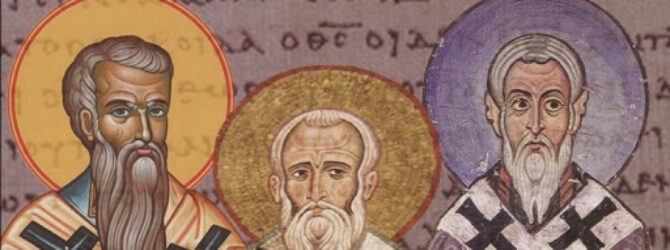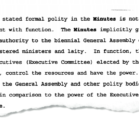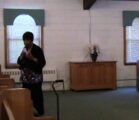
CHURCH FATHERS on the RAPTURE
David K. Hebert, Master of Arts in Theological and Historical Studies
The Rapture of the Church: A Doctrine of the Early Church or a Recent Development of
the Dispensational Movement?
Larry Hart, Ph.D.
This thesis investigated whether the doctrine of the premillennial, pretribulation
Rapture of the Church, as a separate event from Jesus’ second coming, originated in the
early Church or with the Dispensational Movement around 1830. Although the term
“rapture” does not itself appear in Scripture, it comes from the Latin words, rapere and
rapiemur and from the Greek word harpazo (which does appear in the New Testament).
The New Testament text supports the concept of a Rapture of the Church, as well as
being confirmed by the raptures of Enoch, Elijah and Jesus. There are related terms in the
New Testament that have been addressed, the foremost being parousia. There are also
related non-scriptural, theological terms that were defined, the foremost being
eschatology, premillennialism, pretribulationalism and imminence. The writings of the
Ante-Nicene Fathers were examined to see if they address any of these terms. Subsequent
historical church writings were also reviewed to uncover any mention of the Rapture.
Many modern day theologians posit that the beginning of the teaching of the
Rapture, as a belief within the traditional orthodox Church, did not occur until around the
year 1830 Even most of them admit that the Church Fathers were
premillennialists (believing in a literal interpretation of the Book of Revelation,6 with its
view of a Tribulation, an Antichrist, and Jesus establishing an earthly kingdom for a
thousand years, Millennium, from the Latin words milus, meaning thousand and annum,
meaning years, after His Second Coming).
The Greek word episunagoge is mentioned as the eschatological gathering of the
faithful to Christ by: Dionysius Alexandrinus (d. 264) in Eusebius’ historia
ecclessiasticae.7.24.5, Eusebius (d. 399), himself, in his demonstratio evangelica.2.3, and
Cyrillus Alexandrinus (d. 444) in his commentarius in John.3.4.
20 Metatithemi (to
translate persons) is used to address rapture by: Clement of Rome (1st cent.), to describe
Enoch’s rapture in his First Epistle to the Corinthians.9.3; Irenaeus (d. 202), who says,
“Enoch was translated, thus pointing out by anticipation the translation of the just and
that those who were translated into Paradise, as a prelude to immortality will remain there
until the completion of the age,” in his Against Heresies.5.5.1; Methodius (d. 311) in his
de resurrectione mortuorum.3.5, and Hippolytus Thebanus (8th cent.) in his
fragmenta.8c5 (both said that a Christian’s immortality was to begin when their body was
translated like Enoch’s); and finally, Eusebius spoke of God figuratively translating
Christians at the end of the age in his preparatio evangelica.7.8
The word ekpheugo is used to mean escape, especially avoidance of eternal
punishment, by Ignatius of Antioch (d. 110) in his Epistle of Trallianeos.2.1 and Justin
Martyr in his Dialogue with Trypho.138.3 and First Apology.68.2.
24 Apostasia is used as
meaning departure by the apocryphal apocalyptic book of Domitio Mariae. Apostasis is
used to mean departure by Clement of Alexandria in his stromateis.4.22.
25 The Greek
words relating to rapture not used at all by the Fathers are: epairo, poreuomai, allasso,
and sozo.
As can be seen from the above citations, the Fathers had an understanding of the
concept of rapture, referred to the Old Testament raptures of Enoch and Elijah and the
New Testament raptures of Paul, John, and Jesus, and even made eight specific
references to the rapture of Christians
The first direct reference to the Rapture (as the Church escaping the Great
Tribulation) is found in the early second century apocalyptic writing of the Shepherd of
Hermas. In the fourth vision, chapter 1, he says, [emphasis added] “I saw another vision,
brethren-a representation of the tribulation that is to come.” Then in chapter 2, he says,
“lo! a virgin meets me, adorned as if she were proceeding from the bridal chamber” and
“I knew from my former visions that this was the Church,” and then, “You have escaped
from great tribulation on account of your faith, and because you did not doubt in the
presence of such a beast. Go, therefore, and tell the elect of the Lord His mighty deeds,
and say to them that this beast is a type of the great tribulation that is coming. If then ye
prepare yourselves, and repent with all your heart, and turn to the Lord, it will be possible
for you to escape it, if your heart be pure and spotless, and ye spend the rest of the days
of your life in the serving the Lord blamelessly.”31 Notice also, the statement that to
escape the tribulation the Church must keep a “pure and spotless” heart. This is the same
language used in 2 Peter 3:14, speaking of the Rapture of the Church.
The next reference is found in The Teaching of the Twelve Apostles (The
Didache), written in the mid-second century, and with the help of the footnotes paints a
clear picture of the chronology of events of the End Times (Rapture, Antichrist,
Tribulation, Second Coming). In chapter 16, verses 3-8, it says [emphasis added],
For in the last days false prophets and corrupters shall be multiplied, and the
sheep shall be turned into wolves, and love shall be turned into hate; for when
lawlessness increaseth, they shall hate and persecute and betray one another, and
then shall appear the world-deceiver as Son of God, and shall do signs and wonders, and the earth shall be delivered into his hands, and he shall do
iniquitous things which have never yet come to pass since the beginning. Then
shall the creation of men come into the fire of trial, and many shall be made to
stumble and shall perish; but they that endure in their faith shall be saved from
under the curse itself. And then shall appear the signs of the truth; first the sign of
an outspreading of heaven; then the sign of the sound of the trumpet; and the
third, the resurrection of the dead; yet not of all, but as it is said: The Lord shall
come and all his saints with Him. Then shall the world see the Lord coming upon
the clouds of heaven.
32
Notice, the context is the Last Days and the quote starts out with the signs of the times,
coinciding with Matthew 24, Mark 13, and Luke 21. Next, the appearance of the
antichrist and the Tribulation are addressed. Then, there comes the exclusionary “but,”
they that endure in their faith shall be saved from under the curse itself. The footnote in
the text after this statement says, “from under the curse itself; namely, that which has just
been described.”33 This is a direct reference to the Church being saved from the
Tribulation.
Clement of Rome (30-100) spoke about the Rapture in his First Epistle to the
Corinthians. Following the logical flow of his teaching from chapter to chapter yields the
result of a Pretribulation Rapture of the Church. As Irenaeus did, Clement first gives
Enoch as an example and then mentions the Lord delivering Noah (chap. 9). He also
mentions the Lord saving Lot (chap. 11) and Rahab (chap. 12). Then, he speaks
specifically to the Church in chapter 23, [emphasis added] “Compare yourselves to a tree:
take [for instance] the vine. First of all, it sheds its leaves, then it buds, next if puts forth
leaves, and then it flowers; after that comes the sour grape, and then follows the ripened
fruit. . . . Of a truth, soon and suddenly shall His will be accomplished, as the Scripture
also bears witness, saying, ‘Speedily will He come, and will not tarry;’ and, ‘The Lord
shall suddenly come to His temple, even the Holy One, for whom ye look.”44 And
following directly after this in chapter 24
Ephraem of Nisibis (306-373 a.d.), which clearly teaches that believers will be raptured and taken to Heaven before The Tribulation.2
Ephraem of Nisibis was the most important and prolific of the Syrian church fathers and a witness to early Christianity on the fringes of the Roman Empire in the late fourth century.
He was well-known for his poetry, exegetical and theological writings, and many of the hymns of the early Byzantine church. So popular were his works that in the fifth and sixth centuries he was adopted by several Christian communities as a spiritual leader and role model.
This sermon is deemed to be one of the most interesting apocalyptic texts of the early Middle Ages. The translation of the sermon includes the following segment:3
“For all the saints and Elect of God are gathered, prior to the tribulation that is to come, and are taken to the Lord lest they see the confusion that is to overwhelm the world because of our sins.”
What did the first century church fathers believe about the Rapture? Were they pre-tribulation or post-tribulation? What did the disciples of the Apostles of Jesus Christ teach about the Rapture?



